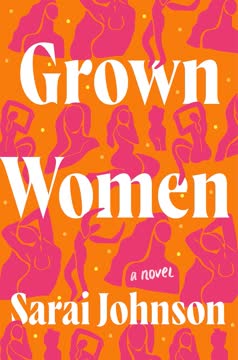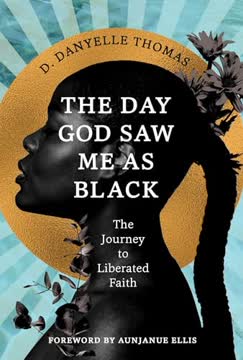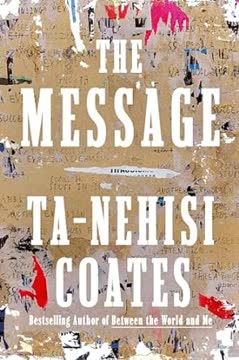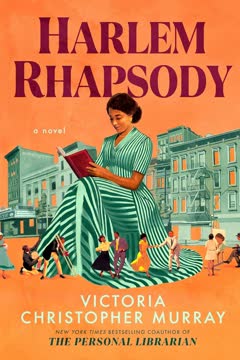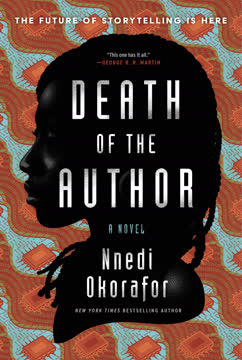Plot Summary
The Day the World Drowned
One morning, every white person in America walks into the nearest body of water and drowns, leaving behind a stunned, grieving, and unmoored Black and brown population. The Event is sudden, inexplicable, and total. Society is upended: jails are unsealed, banks close, and the wild reclaims the cities. The absence of whiteness is felt everywhere, from the empty streets to the haunted houses filled with the relics of those who are gone. The survivors, left to inherit a country built on their oppression, are forced to confront not only the practical challenges of survival but also the psychological weight of being left behind. Some see it as penance, others as a curse, but all must reckon with the new reality and the question of what comes next.
Prisoner to Professor
Charlie, a Black man recently released from prison by the event, finds himself living in a suburban house once owned by a white family. Haunted by the artifacts of the previous owners, he struggles with guilt, shame, and the sense of being an imposter in a world suddenly emptied of its old power structures. He becomes a teacher at Howard University, instructing students in solar power and systems thinking, but cannot shake the feeling of being both unworthy and unredeemed. The new world offers opportunity, but Charlie's internalized conflict—his "darkness"—remains unresolved, shaped by a lifetime of being seen as less.
The Voice in the Dark
Late one night, Charlie receives a phone call from a young woman claiming to be the daughter of Elizabeth, his former lover. She is alone, angry, and desperate, having survived the event while her white family perished. She demands that Charlie, the only living person who "owes" her anything, come to Wisconsin and take her south to find the last place for "people like me." The call forces Charlie to confront his past, his failures, and the possibility of redemption through connection with the daughter he never knew.
The Last White Family
Sidney, a biracial teenager in Wisconsin, watches in horror as her white mother, stepfather, and twin brothers walk into the lake and drown, compelled by a force she cannot feel. She tries to save them but is left alone, traumatized, and adrift in a house full of memories. The Event marks her as an outsider in both worlds—too Black for the vanished, too white for the survivors. Her sense of identity fractures, and she clings to the hope of finding her only remaining family: her Black father, Charlie.
A Daughter's Awakening
Haunted by grief and alienation, Sidney prepares to leave her empty home. She finds a note from her white aunt, Agnes, claiming that not all white people are gone and that a colony of survivors exists in Orange Beach, Alabama. This message becomes Sidney's obsession—a chance to reclaim her lost identity and family. She calls Charlie, demanding he take her south, setting in motion a journey that will test both of them.
The Road to Wisconsin
Charlie drives from D.C. to Wisconsin, traversing a landscape scarred by loss and reclaimed by nature. He encounters burned towns, abandoned highways, and the remnants of a society that no longer exists. Along the way, he meets Ethel, an elderly Black woman who has burned the land around her home as an act of cleansing and reclamation. Ethel's wisdom and hospitality offer Charlie a glimpse of healing, but also remind him of the weight of history and the need to build anew.
Burned Earth, Open Doors
Charlie arrives at Sidney's family estate, a grand house now empty and haunted. Their first meeting is tense and fraught with pain—Sidney greets him with a rifle, and their conversation is a collision of anger, guilt, and unmet expectations. Both are strangers to each other, bound only by blood and the shared trauma of the event. Sidney insists on traveling south to find her aunt and the rumored white colony, while Charlie, still wrestling with his own darkness, agrees to help her, hoping for a chance at redemption.
Reunion at Gunpoint
As Charlie and Sidney prepare to leave, a Black family approaches the estate, seeking shelter. Sidney, conditioned by fear and loss, nearly shoots them, but Charlie intervenes, insisting on mercy and connection. The encounter forces Sidney to confront her own capacity for violence and the meaning of community in a world where old divisions no longer make sense. The moment marks the beginning of a fragile trust between father and daughter.
The South Reimagined
Their journey takes them through a transformed South, where Black communities have reclaimed cities and built new systems of governance, economy, and culture. In Mobile, they encounter a society led by a king and queen—Hosea and Vivian—who have created a vibrant, self-sustaining community rooted in African and Caribbean traditions. The city pulses with music, color, and purpose, offering a vision of what Black liberation and healing might look like. Yet, beneath the surface, the trauma of history and the challenge of true unity remain.
The King and Queen of Mobile
Charlie and Sidney are brought before the king and queen, who rule not by force but by wisdom and consensus. The royal family—especially the princess Nona and her brothers—embody the hope and complexity of the new world. Sidney is taken under Nona's wing, undergoing rituals of cleansing, self-discovery, and communal healing. Charlie, meanwhile, is drawn into the king's secret project: a machine designed to "heal Black consciousness" by tuning into the collective trauma and memory of the African diaspora.
The Machine in the Garage
Charlie learns that the king's machine, built on ancient African and Tesla-inspired technology, was responsible for the event that killed all the white people. The machine tapped into the repressed pain, rage, and memory of Black people, unleashing a wave that the world could not survive. Now, the king wants Charlie's help to repair and reactivate the machine, promising that it can heal and unite the survivors. Charlie is torn between the promise of healing and the fear of repeating the past.
The Princess and the Outsider
Sidney, immersed in the life of Mobile, is both enchanted and alienated. She is welcomed as a sister by Nona, but cannot escape the feeling of being an outsider—neither fully Black nor fully white, never truly at home. Her journey becomes one of self-acceptance, as she learns the history, rituals, and resilience of her people. Yet, the pull of Orange Beach and the hope of finding her aunt—and perhaps her lost self—remains strong.
Healing in the Dark
As Mardi Gras approaches, Mobile erupts in celebration—a carnival of music, dance, and communal joy. Sidney and Charlie both undergo transformative experiences: Sidney dances away her grief and shame, finding a sense of belonging in the collective rhythm; Charlie, guided by the conjure woman Seraphin, confronts his darkness and receives a vision of his ancestors, learning that his pain is both personal and collective. Both are changed, but the question of the machine—and the risk of using it again—looms.
The Carnival of Us
The city's Mardi Gras becomes a metaphor for the possibility of a new world—a place where Blackness is celebrated, not feared; where trauma is acknowledged, not denied; and where the future is shaped by those who have survived. The royal family, the people of Mobile, and the visitors from across the country gather in a festival of color, music, and movement. The moment is both a culmination and a crossroads: the past cannot be undone, but the future is open.
The Choice to Inherit
Charlie is given the ultimate choice: whether to help the king and queen reactivate the machine, knowing it could heal or destroy, unite or divide. The decision is not his alone, but symbolic of the burden carried by all survivors—the responsibility to inherit the earth, to claim joy and wholeness, and to risk change. Sidney, meanwhile, travels to Orange Beach, only to find that the white colony is a hollow echo of the past, clinging to old illusions and unable to move forward.
The Signal and the Stars
In the end, Charlie chooses to activate the machine—not as an act of vengeance, but as an act of healing and connection. The signal, powered by the collective energy of Mardi Gras and the music of the stars, washes over the land, offering a chance for true unity and self-acceptance. Sidney, floating in the Pacific, feels the music reach her—a message from her father, from her people, from the ancestors. The story closes on the possibility of a new inheritance: not of pain, but of joy, resilience, and the right to be whole.
Characters
Charlie Brunton
Charlie is a Black man whose life has been shaped by systemic injustice, wrongful imprisonment, and internalized shame. Released from prison by the event, he becomes a reluctant inheritor of a world without whiteness. His journey is one of self-forgiveness, as he struggles to reconcile his past, his failures as a father, and his longing for connection. Charlie's arc is defined by his ability to "fix" systems and people, but his true healing comes from accepting his own darkness and embracing the possibility of joy.
Sidney Brunton
Sidney is Charlie's estranged daughter, raised in a white family and left alone after the event. Her identity is fractured—never fully accepted by either world, she is driven by grief, anger, and the desperate need to belong. Sidney's journey is both physical and psychological: from Wisconsin to Alabama, from alienation to acceptance, from violence to vulnerability. Her relationship with Charlie is fraught but ultimately redemptive, as both learn to see themselves—and each other—anew.
Elizabeth Waggoner
Elizabeth is Sidney's white mother and Charlie's former lover. Her choices—loving Charlie, then betraying him under pressure—set in motion the traumas that define both father and daughter. Though dead before the main events, her presence lingers in memory, letters, and the unresolved wounds she leaves behind. Elizabeth embodies the complexities of love, guilt, and complicity in a divided world.
Hosea (The King)
Hosea is the king of Mobile, a visionary leader who combines scientific genius with deep historical awareness. He is both a father and a builder, determined to heal the wounds of the past and create a society where Black people can thrive. His creation of the consciousness machine is both an act of hope and a source of danger, reflecting the double-edged nature of power and inheritance.
Vivian (The Queen)
Vivian is the queen of Mobile, a former activist and the spiritual heart of the community. She embodies wisdom, compassion, and the fierce determination to claim joy and wholeness for her people. Vivian's leadership is rooted in both tradition and innovation, and her influence shapes the choices of those around her, especially her children and Charlie.
Nona
Nona is the daughter of Hosea and Vivian, a young woman who bridges tradition and change. She becomes Sidney's mentor and "sister," guiding her through rituals of healing and self-discovery. Nona represents the possibility of a new generation unburdened by shame, able to claim both heritage and individuality.
Fela
Fela is Nona's brother and Sidney's love interest. He is strong, grounded, and open-hearted, offering Sidney both safety and challenge. Fela's role is to embody the best of the new world—compassion, resilience, and the willingness to forgive and move forward.
Tau
Tau is the eldest son of the royal family, a man whose rage at historical injustice is both his strength and his limitation. He is fiercely protective of his family and community, but struggles to move beyond anger to healing. Tau's journey is a reminder that liberation requires more than vengeance—it demands transformation.
Seraphin
Seraphin is a healer and mystic who helps Charlie confront his darkness and connect with his ancestors. She represents the power of African spiritual traditions and the importance of ritual, memory, and the unseen. Seraphin's presence is both grounding and transcendent, guiding Charlie toward wholeness.
Zu
Zu is Sailor's child and a flight attendant at the new Chicago airport. They befriend Sidney and represent the fluidity, resilience, and creativity of the post-event world. Zu's journey is one of self-acceptance and the forging of chosen family.
Plot Devices
The Event
The central plot device is the event in which all white people in America walk into water and drown. This act, both magical and apocalyptic, serves as a catalyst for the story, forcing the survivors to confront the legacy of racism, the meaning of inheritance, and the possibility of building a new world. The Event is both a literal and symbolic cleansing, raising questions about guilt, penance, and the cost of healing.
The Machine
The king's machine, inspired by African science and Tesla's theories, is a transmitter/receiver that taps into the collective consciousness of Black people. It is both the cause of the event and the potential key to healing. The machine's inability to be calibrated reflects the uncontrollable nature of trauma and the risks of wielding power without understanding. Its ultimate activation, powered by the music and energy of Mardi Gras, becomes a metaphor for collective healing and the reclamation of joy.
Dual Narratives
The story alternates between Charlie and Sidney, each on a journey of self-discovery, reconciliation, and transformation. Their paths intersect and diverge, mirroring the broader themes of inheritance, identity, and the struggle to claim one's place in the world.
Ritual and Community
Rituals—baths, dances, meals, and ceremonies—are used throughout the novel as means of healing, connection, and self-acceptance. The communal life of Mobile, the Mardi Gras celebration, and the acts of collective work and play all serve as counterpoints to the isolation and trauma of the past.
Foreshadowing and Symbolism
The recurring imagery of water (both as death and cleansing), stars (as messages and sources of power), and music (as the language of survival and connection) foreshadow the novel's resolution. These symbols tie together the personal and collective arcs, suggesting that healing is both an individual and communal act.
Analysis
Sky Full of Elephants is a bold speculative novel that asks: What would happen if the structures of white supremacy vanished overnight? Through the intertwined journeys of Charlie and Sidney, the book explores the psychological and societal aftermath of such an event—not as a utopia, but as a space of reckoning, grief, and possibility. The novel's central metaphor—the machine that tunes into Black consciousness—serves as both a literal and figurative device for examining the weight of history, the dangers of unchecked trauma, and the necessity of collective healing. The story insists that true inheritance is not material, but spiritual and communal: the right to joy, wholeness, and self-definition. By centering rituals, music, and the wisdom of ancestors, the book offers a vision of liberation that is neither escapist nor vengeful, but rooted in the messy, beautiful work of becoming "us." The ultimate lesson is that healing is not the erasure of pain, but the transformation of it into connection, creativity, and the courage to claim the earth—and the stars—as one's own.
Last updated:
FAQ
Synopsis & Basic Details
What is Sky Full of Elephants about?
- A post-apocalyptic reckoning: Sky Full of Elephants imagines a world where every white person in America has mysteriously drowned, leaving behind a Black and brown population to inherit a radically transformed society. The novel follows Charlie, a formerly incarcerated Black man, and Sidney, his biracial daughter, as they navigate this new reality, grappling with grief, identity, and the profound questions of inheritance and collective healing.
- Journey of self-discovery: The narrative unfolds as Charlie embarks on a journey to find Sidney, who is searching for a rumored white colony in Alabama, clinging to a past that no longer exists. Their individual quests for belonging and understanding intertwine with the larger societal effort to build a new world from the ashes of the old, free from the historical burdens of oppression.
- Reclaiming identity and power: At its core, the story explores the complex themes of Black consciousness, trauma, and liberation. It delves into how a community redefines itself, rebuilds infrastructure, and reclaims its spiritual and cultural heritage in the absence of its oppressors, while also confronting the internal conflicts and lingering pain of centuries of injustice.
Why should I read Sky Full of Elephants?
- Radical speculative premise: Readers seeking a truly unique and thought-provoking speculative fiction experience will find Sky Full of Elephants compelling. It offers a bold, unflinching exploration of race, power, and identity in a post-apocalyptic America, challenging conventional narratives of survival and utopia.
- Deep emotional resonance: The novel delves into profound psychological and emotional depths, particularly through Charlie and Sidney's complex relationship and their individual struggles with inherited trauma and self-acceptance. It offers a raw, honest portrayal of grief, anger, and the arduous path toward healing and self-forgiveness.
- Rich cultural tapestry: Cebo Campbell weaves a vibrant narrative rich with African and Caribbean cultural references, music, and spiritual traditions. The reimagined city of Mobile, Alabama, serves as a powerful vision of Black liberation and community, offering a hopeful counterpoint to the devastation of the past.
What is the background of Sky Full of Elephants?
- Post-Event America: The story is set approximately one year after "the event," a cataclysmic, unexplained phenomenon where all white people in America walked into bodies of water and drowned. This sudden absence has left the country's infrastructure in disarray, with cities either abandoned, struggling, or, in some cases, thriving under new Black leadership.
- Reimagined societal structures: The narrative explores the practical and philosophical implications of this societal shift. Traditional institutions like banks, police stations, and even the federal government have collapsed, replaced by localized, often community-led initiatives. Howard University, for instance, becomes a central hub for rebuilding and education, highlighting the historical resilience of Black institutions.
- Historical and cultural context: The novel is deeply steeped in the history of Black America, referencing slavery, the Civil Rights Movement, and figures like Medgar Evers and George Washington Carver. It posits that "the event" is a manifestation of centuries of repressed Black trauma and anger, and that true healing requires confronting this collective history, often through ancestral wisdom and cultural practices.
What are the most memorable quotes in Sky Full of Elephants?
- "Only a dark man could see such a horrible thing and feel what he felt. Too dark to be good. Too dark to be redeemed." (Charlie, Chapter 1): This quote encapsulates Charlie's profound internalized shame and self-hatred, a direct consequence of systemic racism and his wrongful imprisonment. It highlights the deep psychological scars that persist even after the external structures of oppression have vanished, setting the stage for his journey toward self-acceptance.
- "White ain't a people. White is a spell they put on themselves. Losing they minds in it too much is probably what killed'em. So there can't be a white colony, because white ain't an idea no more." (Sailor, Chapter 12): Sailor's blunt declaration offers a radical redefinition of "whiteness" not as a race, but as a constructed ideology. This quote is pivotal in challenging Sidney's ingrained perceptions and the very premise of her journey, suggesting that "the event" was a consequence of clinging to a destructive idea rather than a biological reality.
- "The signal heals you, Charles. It connects you back to everything we lost, and it heals you." (Hosea, Chapter 31): This quote from the King reveals the profound purpose of the consciousness machine, linking collective trauma to a tangible, healing frequency. It underscores the novel's central theme that true liberation comes from confronting and processing historical pain, transforming it into a source of connection and power for the Black community.
What writing style, narrative choices, and literary techniques does Cebo Campbell use?
- Lyrical and evocative prose: Campbell employs a rich, poetic writing style, often using sensory details and metaphorical language to create a deeply immersive experience. Descriptions of nature, music, and emotional states are particularly vivid, contributing to the novel's dreamlike yet grounded atmosphere.
- Dual perspective and shifting focus: The narrative primarily alternates between Charlie and Sidney's third-person limited perspectives, allowing readers intimate access to their internal struggles and growth. However, Campbell occasionally broadens the scope to include other characters' viewpoints or collective experiences, creating a panoramic view of the transformed world.
- Symbolic realism and magical realism: The novel blends elements of speculative fiction with a grounded realism, particularly in its portrayal of "the event" and the consciousness machine. Magical realism is subtly woven throughout, especially in the descriptions of the "signal," ancestral connections, and the heightened sensory experiences of the characters, blurring the lines between the tangible and the spiritual.
Hidden Details & Subtle Connections
What are some minor details that add significant meaning?
- The "Quarter-til" timekeeping: In Chapter 1, the detail that people now respond to time inquiries with "Quarter-til" because "gone was the appraiser of hours into wages" subtly highlights the profound shift in societal values. It signifies a liberation from the capitalist commodification of time, where minutes are no longer evaluated for their "resource ticking inside a body," reflecting a deeper, more human-centered existence.
- The abandoned Chihuahuas and cocker spaniels: The image of "Chihuahuas and cocker spaniels scavenged and begged in packs, their dog sweaters ragged, bedazzled collars dulled of sparkle" (Chapter 1) is a poignant, almost absurd detail. It symbolizes the complete collapse of the previous social order and the abandonment of its superficialities, as even pampered pets are reduced to their primal state, mirroring the larger human struggle for survival.
- The "Registry of Those Remaining": This online index (Chapter 3) is a seemingly bureaucratic detail, but its existence underscores the lingering need for order and accountability in a world without formal government. It also subtly hints at the scale of "the event" – a population so drastically reduced that a national registry of survivors is both necessary and feasible, emphasizing the profound emptiness left behind.
What are some subtle foreshadowing and callbacks?
- Charlie's "wavelength" self-perception: Early in Chapter 10, Charlie recalls imagining himself as a "wavelength, like a radio frequency, moving free but still attached." This seemingly innocent childhood thought subtly foreshadows his later role in understanding and channeling the "signal" of Black consciousness through the king's machine, which operates on principles of resonance and frequency. It suggests his innate connection to the very power that reshaped the world.
- Ethel's controlled burn: Ethel's admission that she "set fire to it" and "started what needed to be done" (Chapter 3) for miles around her home is a direct foreshadowing of the king's revelation about the machine. Her act of cleansing through fire, driven by the need to build a new life free from past cruelty, mirrors the king's more radical, collective act of "burning down to the bones of the world" to heal Black consciousness.
- The recurring scent of lavender: Lavender is first associated with Elizabeth (Chapter 1), then Sidney's mother's garden (Chapter 2), and later permeates the Waggoner estate (Chapter 7). This recurring scent acts as a powerful callback to Sidney's lost white family and her initial, painful connection to her past. It symbolizes the lingering presence of memory and grief, even as Sidney moves towards a new identity.
What are some unexpected character connections?
- Sailor and Zu's chosen family dynamic: While the summary mentions Zu is Sailor's child, the depth of their chosen family bond is subtly revealed through their interactions. Sailor's gruff protectiveness and Zu's unwavering loyalty, despite Sailor's past (prison, violence), highlight a profound connection forged through shared trauma and mutual support. Sailor's statement, "First thing was get my child. Then we both went to where we knew other black folks would be" (Chapter 15), emphasizes this immediate, instinctual bond in the new world.
- Charlie's unexpected kinship with Ethel: Ethel, the old woman who burned her land, serves as a surprising maternal figure for Charlie. Her wisdom and directness, particularly her ability to see through his shame ("It's okay to be two things at once" – Chapter 3), offer him a moment of profound comfort and a glimpse of the healing he desperately needs. She is a spiritual guide who helps him begin to reconcile his internal conflict, a connection he explicitly links to his deceased mother.
- Sidney's mirrored experience with Malcolm: Malcolm, the actor at Redemption Farm, shares a deep, unexpected connection with Sidney through their mutual suffering and feelings of being "lost" despite their different backgrounds. His honesty about his own "craziness" and the illusion of "normal" (Chapter 27) allows Sidney to articulate her own buried pain and suicidal ideation, creating a space for shared vulnerability and healing that transcends their initial roles as "rehabilitator" and "rehabilitated."
Who are the most significant supporting characters?
- Ethel, the wise elder: Beyond her role in Charlie's journey, Ethel embodies the deep wisdom and resilience of the Black community. Her act of burning the land is not just practical but symbolic of radical self-reclamation and the necessary destruction of old systems to build anew. She represents an ancient, grounded knowledge that predates and transcends "the event."
- Seraphin, the Manbo: Seraphin is crucial as Charlie's spiritual guide and a living embodiment of African diasporic traditions. Her role as a "conjure woman" and her ability to connect Charlie to his ancestors and the "signal" (Chapter 41) are central to his ultimate healing and understanding of the machine. She represents the spiritual dimension of Black consciousness and liberation.
- Malcolm, the empathetic actor: Malcolm, encountered at Redemption Farm, serves as a mirror for Sidney's internal struggles. His articulate reflections on the illusion of "normal" and the pervasive nature of suffering (Chapter 27) provide Sidney with a crucial moment of self-recognition and validation, helping her to process her own grief and fractured identity.
Psychological, Emotional, & Relational Analysis
What are some unspoken motivations of the characters?
- Charlie's pursuit of self-forgiveness: While Charlie explicitly seeks redemption, his deeper, unspoken motivation is to forgive himself for his past, particularly his perceived failures and the shame of his wrongful imprisonment. His desire to "fix" the machine and connect with Sidney is a subconscious attempt to mend his own fractured sense of self, believing that by helping others, he can finally absolve himself.
- Sidney's longing for validation: Beyond finding her aunt, Sidney's journey to Orange Beach is driven by an unspoken need for external validation of her identity. Having been an outsider in her white family and feeling "less" in the new Black world, she seeks a place where her biracial identity is understood and accepted, hoping to find a sense of belonging that has always eluded her.
- Hosea's burden of responsibility: The King's motivation to reactivate the machine, despite its destructive potential, stems from a profound, unspoken sense of responsibility to his people. He carries the weight of centuries of Black suffering and believes that only through this radical act of collective healing can his community truly be free and whole, even if it means risking further destruction.
What psychological complexities do the characters exhibit?
- Charlie's internalized oppression and "darkness": Charlie grapples with a deep-seated "darkness" – an internalized self-hatred and sense of unworthiness stemming from his experience as a Black man in America and his wrongful conviction. This complexity is evident in his initial relief at "the event" and his struggle to accept his new role as a respected teacher, constantly feeling like an imposter despite his capabilities. His journey is a psychological unraveling and re-integration of this "darkness" into a source of strength.
- Sidney's identity fragmentation and survivor's guilt: Sidney's biracial identity is a source of profound psychological complexity. She feels "half of two different worlds" and "never fully one" (Chapter 23), leading to a deep sense of alienation. Her survivor's guilt, stemming from her inability to drown with her family, manifests as self-punishment and a desperate clinging to the past, making her resistant to the new world's embrace.
- Tau's righteous anger as a coping mechanism: Tau's constant anger, while rooted in historical injustice, is a complex psychological defense. It serves as a protective shield, preventing him from fully processing the grief and vulnerability associated with the trauma of his ancestors. His inability to "laugh or smile" (Chapter 36) reflects a deep-seated pain that he channels into a fierce, almost performative, rage.
What are the major emotional turning points?
- Charlie's intervention at gunpoint: When Charlie physically shields the Black family from Sidney's rifle (Chapter 8), it marks a critical emotional turning point for him. This act of selfless protection, driven by a deep-seated empathy, begins to chip away at his internalized shame and allows him to embrace a nascent sense of fatherhood and community responsibility, moving beyond his personal conflict.
- Sidney's bath and self-reflection in Mobile: The ritual bath and subsequent self-reflection in Nona's mirror (Chapter 23) are profound emotional turning points for Sidney. The physical cleansing and Nona's unconditional acceptance allow her to shed layers of self-hatred and begin to see her own beauty and inherent worth, transforming her perception of her "different" features into sources of strength and identity.
- Charlie's experience with the prototype signal: When Charlie listens to the prototype of the king's machine (Chapter 31), the "enormity" of the signal breaks him apart, releasing years of repressed emotion. This overwhelming experience, described as "ferocious ecstasy" and "impossible clarity," is a cathartic emotional release that allows him to finally confront and integrate his "darkness," leading to a profound sense of wholeness and purpose.
How do relationship dynamics evolve?
- Charlie and Sidney: From estrangement to fragile connection: Their relationship begins with deep mistrust and resentment, fueled by Charlie's absence and Sidney's abandonment. Sidney's initial call is a demand, and their first meeting is at gunpoint. However, through shared vulnerability (Charlie's prison truth, Sidney's suicidal ideation) and Charlie's consistent protective actions, their dynamic slowly shifts towards a fragile, yet profound, father-daughter bond, culminating in Charlie's decision to activate the machine for her.
- Mobile's community: From fractured past to collective "us": The people of Mobile, initially presented as a thriving but somewhat mysterious collective, evolve into a deeply interconnected "us." Their relationships are built on shared values, mutual support, and a collective commitment to healing and progress. This is exemplified by the communal meals, the Mardi Gras celebration, and the willingness of characters like Nona and Fela to embrace Sidney as "sister," demonstrating a radical inclusivity.
- Charlie and Seraphin: From spiritual guide to intimate partner: Seraphin initially serves as Charlie's spiritual guide, helping him confront his inner turmoil. Their relationship deepens into an intimate, loving partnership, symbolizing the integration of Charlie's spiritual and emotional healing. Their connection is rooted in mutual understanding and a shared commitment to the larger purpose of collective liberation, highlighting how personal relationships can be integral to broader societal transformation.
Interpretation & Debate
Which parts of the story remain ambiguous or open-ended?
- The precise nature of "the event": While the king reveals his machine initiated "the event," the exact mechanism by which it caused all white people to drown remains somewhat ambiguous. It's described as a "signal" that "poured out" repressed Black trauma, but the scientific and metaphysical specifics of how this translated into a mass drowning are left open to interpretation, blurring the line between literal and symbolic causation.
- The fate of the rest of the world: The narrative primarily focuses on America, particularly the Black and brown communities. While there are mentions of other countries (Haiti, Cuba, Mexico, etc.) and the possibility of global connection, the full extent of "the event's" impact on non-American populations or other racial groups is not fully explored, leaving the global aftermath open-ended.
- The long-term implications of the machine's activation: Charlie's final act of activating the machine is presented as a moment of healing and connection, but the full consequences of this "uncalibrated" power are left to the reader's imagination. The queen's earlier warning that it could "hurt as much as help" and Agnes's fear that it would "break the world again" suggest a future that is not necessarily a perfect utopia, but one still fraught with potential challenges and unforeseen outcomes.
What are some debatable, controversial scenes or moments in Sky Full of Elephants?
- "The event" itself and its moral implications: The central premise—the mass drowning of all white people—is inherently controversial. Readers might debate the morality of such an "event," whether it constitutes a form of divine retribution, a necessary cleansing, or an act of extreme violence. The novel's portrayal of some Black characters feeling "relief" or "contented" (Chapter 1) further complicates this, challenging conventional notions of victimhood and justice.
- The king's decision to activate the machine: Hosea's deliberate choice to turn on the machine, knowing it would cause "the event," is a highly debatable moment. While he frames it as an act of healing and choosing "us" (Chapter 31), the immense loss of life raises questions about the ethics of collective punishment and whether any trauma justifies such a radical, destructive solution.
- The portrayal of Orange Beach and "walkers": The depiction of Orange Beach as a community of white people clinging to old illusions and the "walkers" who seek death as salvation (Chapter 35, 40) can be seen as controversial. It presents a stark, almost caricatured, contrast to Mobile's thriving Black society, potentially inviting debate about the novel's portrayal of white identity and its capacity for change or redemption.
Sky Full of Elephants Ending Explained: How It Ends & What It Means
- Charlie's ultimate choice and the machine's activation: The novel culminates with Charlie choosing to activate the king's consciousness machine, not as an act of vengeance, but as a deliberate act of healing and connection. He realizes the machine cannot be "calibrated" to a lesser power; its resonance "just is" and operates at full capacity. His decision is framed as a personal act of self-acceptance and a bequeathal of "freedom, connection, heritage, spirit, and a universe of ancestors" to his daughter and all Black people.
- The "Sky Full of Elephants" as collective consciousness: The title's meaning is revealed through Herald's metaphor: "It's up there, been up there, heavy too. All wisdom and memory… sorrow. A weight so heavy it would damn us all if it came down. But you can't see it'til you see it." (Chapter 29). The ending signifies that this "sky full of elephants"—the collective Black consciousness, laden with history, trauma, and resilience—is finally unleashed and made accessible. Charlie's act allows this powerful, healing energy to flow, transforming rage into creativity and despair into ingenuity.
- Sidney's journey to self-acceptance and connection: Sidney's journey ends on the Pacific coast, where she releases her mother's letter into the ocean, symbolizing her letting go of the past's burdens. She feels the "music of trumpets" (Chapter 42), a direct connection to the signal Charlie activated, signifying her integration into the collective "us." Her final realization that "Knowing him is knowing me" (Chapter 34) underscores her acceptance of her father, her Black heritage, and her own multifaceted identity, finding wholeness not in a specific place, but within herself and the vast, interconnected "us."
Review Summary
Sky Full of Elephants receives mixed reviews, with ratings ranging from 1 to 5 stars. Many readers praise Campbell's ambitious premise and poetic writing style, while others criticize plot holes and underdeveloped characters. The novel explores themes of race, identity, and community in a speculative America where white people have vanished. Some find it thought-provoking and emotionally resonant, while others see it as problematic or dull. The book's portrayal of a post-white society and its handling of biracial identity are particularly divisive topics among reviewers.
Similar Books
Download PDF
Download EPUB
.epub digital book format is ideal for reading ebooks on phones, tablets, and e-readers.

